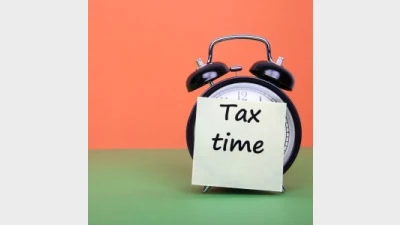How small business owners can maximise superannuation savings



The capital gains tax cap contribution provides the perfect opportunity for small business owners looking to maximise their superannuation retirement savings, writes Stephen Bone.
We have all heard the phrase ‘my business is my super’, but many people find that contributing large amounts of money into superannuation at retirement is an increasingly difficult task.
This is largely due to the current restrictions placed on contributions to superannuation by the concessional and non-concessional caps. For small business owners, the perfect opportunity to maximise their retirement savings may come in the form of a capital gains tax (CGT) cap contribution.
CGT cap contributions
These arise from the application of certain CGT concessions for small businesses:
- the small business 15-year exemption; and
- the small business retirement exemption.
They are considered non-concessional contributions but are exempt from the non-concessional cap up to the indexed lifetime limit. For the 2010-11 financial year the limit is $1.155 million.
A $500,000 lifetime limit applies to the retirement exemption. For most clients the 15-year exemption is either not available or not used effectively, meaning that the $1.155 million cap can never be fully utilised.
CGT concessions for small business
There are four CGT concessions available for the sale of assets used in a small business. Only the two concessions listed above create a CGT cap contribution. To qualify for the small business CGT concessions, there are certain basic conditions that must be satisfied.
These include:
- the turnover or maximum net asset value test; and
- the active asset test.
Additional conditions must also be met if the CGT amount is to qualify for the small business 15-year exemption and retirement exemption. Where the asset concerned is a share in a company or an interest in a trust, further conditions are required to be satisfied.
As you may have guessed, the eligibility criteria for each of these concessions can be a very complex area of taxation. For most planners it is highly recommended that they obtain professional advice from an independent taxation specialist.
Small business 15-year exemption
If your client meets the basic eligibility conditions for the CGT small business concessions and the 15-year CGT exemption, the client can disregard the entire capital gain from the sale of business assets.
An amount equal to all or part of the capital proceeds from the sale may then be contributed to superannuation as a CGT cap contribution up to the relevant cap.
A CGT cap contribution may also be made where the basic eligibility conditions for the 15-year exemption were met and where the asset is a pre-CGT asset or a capital loss has been incurred on disposal of the asset.
Case study 1
Brad and Cheryl, both aged 60, have owned the local landscape supplies business since 1990. They have decided to retire and sell their business for $3 million.
Their accountant informs them that they are eligible for the small business 15-year CGT exemption and can disregard the entire capital gain from the sale of the business.
Brad and Cheryl have little other retirement savings and want to contribute the entire proceeds of their respective shares of the business into superannuation.
Both Brad and Cheryl can each make a CGT cap contribution of $1.155 million ($2.31 million in total) which will be exempt from the non-concessional cap.
The remaining amount of $690,000 ($345,000 each) can be made as a non-concessional contribution and is still well within the $450,000 three-year limit.
Brad and Cheryl could also have chosen to use part of the funds to make a personal deductible contribution of up to $50,000, if required.
Small business retirement exemption
Where your client is eligible for and applies the retirement exemption they can disregard capital gains up to a lifetime limit of $500,000.
An amount equal to all or part of the capital gain may then be contributed to superannuation as a CGT cap contribution.
Unlike the 15-year exemption, the retirement exemption does not allow a contribution to superannuation where a capital loss was incurred, because it only applies to the taxable capital gain itself.
However, the retirement exemption is available to clients under the age of 55. If the client is under age 55 at the time the election is made, the amount must be paid into a superannuation fund.
CGT cap contribution election form
An important part of the process that is often overlooked is notification to the fund of the member’s intentions.
For a contribution to be a considered a CGT cap contribution, it must be accompanied by an approved CGT cap contribution election form.
If the form is not provided on or before the contribution is made, the exemption from the non-concessional contribution cap will not apply. This could lead to a client exceeding their non-concessional cap.
Case study 2
On 15 July 2010, Lauren sold her business of 20 years for $450,000 and contributed the proceeds into her superannuation fund. Lauren did not provide the fund with a CGT cap contribution election form, therefore the contributions were counted against her non-concessional cap.
If Lauren was to make any other non-concessional contributions into superannuation over the next three years she would be liable for excess contributions tax of 46.5 per cent.
When must a CGT cap contribution be made?
The CGT cap contribution must be made before the later of the following:
- the day that the individual is required to lodge their annual tax return for the income year in which the disposal of assets occurred;
- 30 days after the day the capital proceeds were received.
For most people, their annual tax return must be lodged before 31 October of the following financial year, or 31 March if they used a tax agent in the previous year and intend to do so again.
The CGT cap contribution must be made within these timeframes.
Building wealth
Building wealth outside of the business has always been a difficult task for many small business owners. Contribution caps have made it difficult to get large sums into superannuation to generate a tax-effective income stream in retirement.
With many family businesses owned and run jointly by husband and wife, the CGT cap contribution is a welcome opportunity available to both parties.
When combined with the general contribution caps, a CGT cap contribution may allow a retiring couple to sell the family business, make contributions to superannuation in excess of $3.3 million and commence a tax-free income stream.
Stephen Bone is technical services manager at ING Australia.
Recommended for you
When entering paid employment, it’s not long before we are told that we’ll need to lodge a tax return but there are times when a person will be excepted.
Anna Mirzoyan examines how grandfathering affects income support payments and how factors such as paying for aged care can impact them.
There are specific requirements that only apply to trustees of self-managed superannuation funds, writes Tim Howard, including the allocation in their investment strategy.
Investments bonds offer a number of flexible, tax-advantaged benefits, writes Emma Sakellaris, but these are often overlooked as old fashioned when it comes to portfolio allocations.











